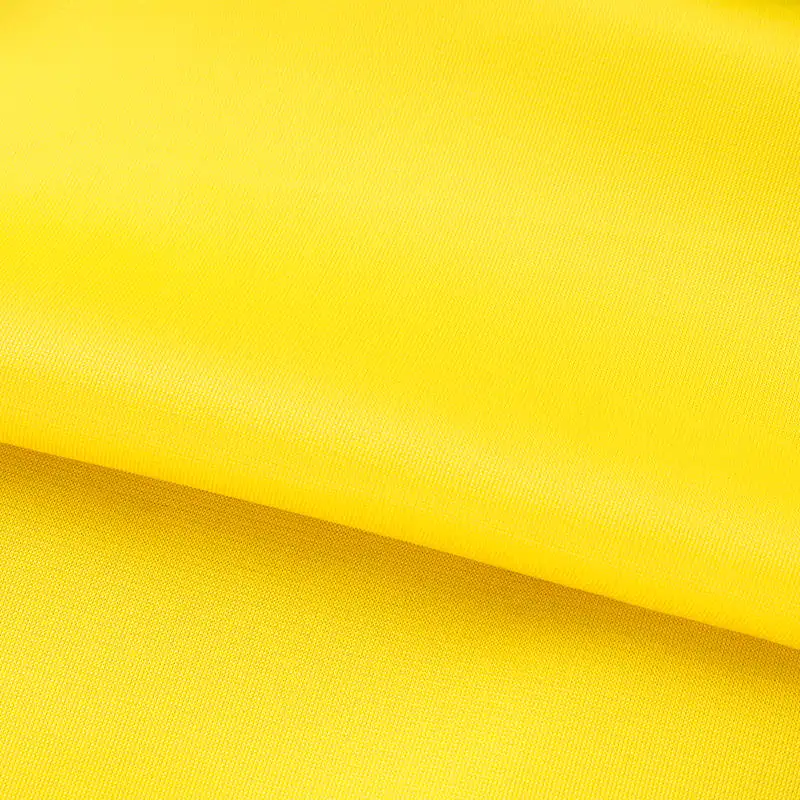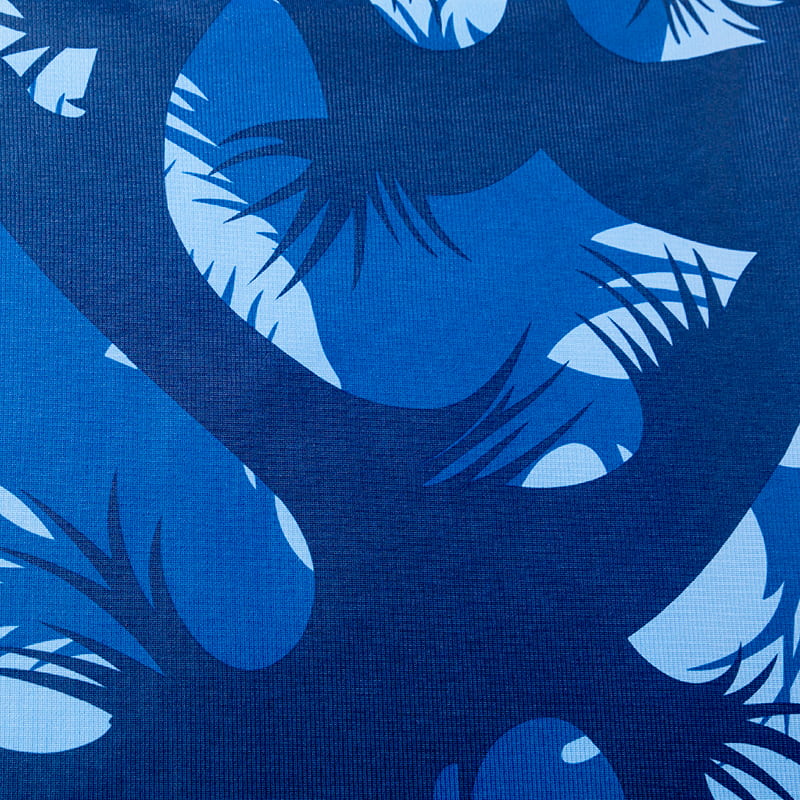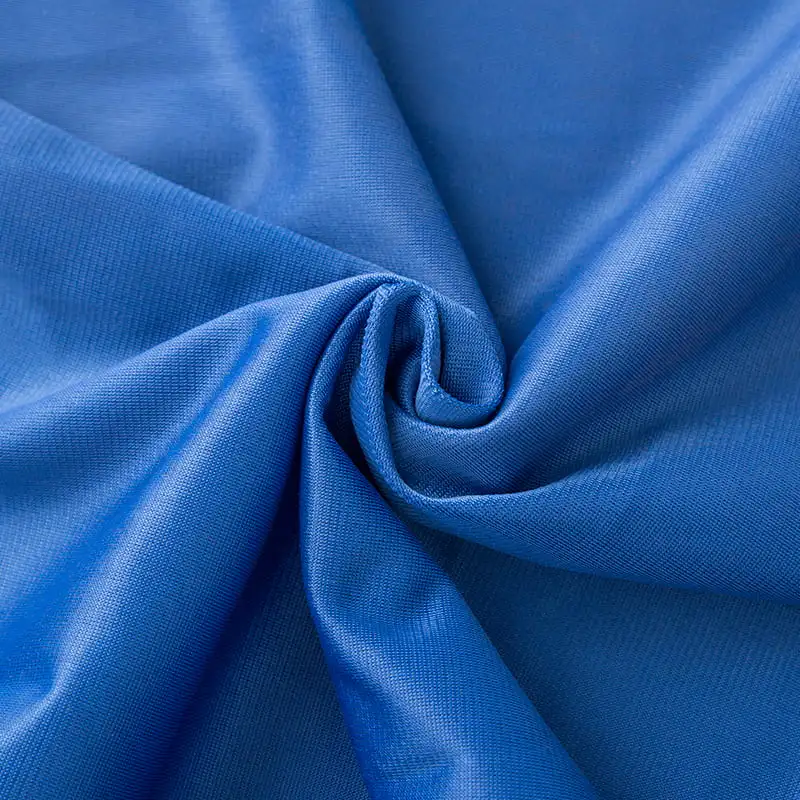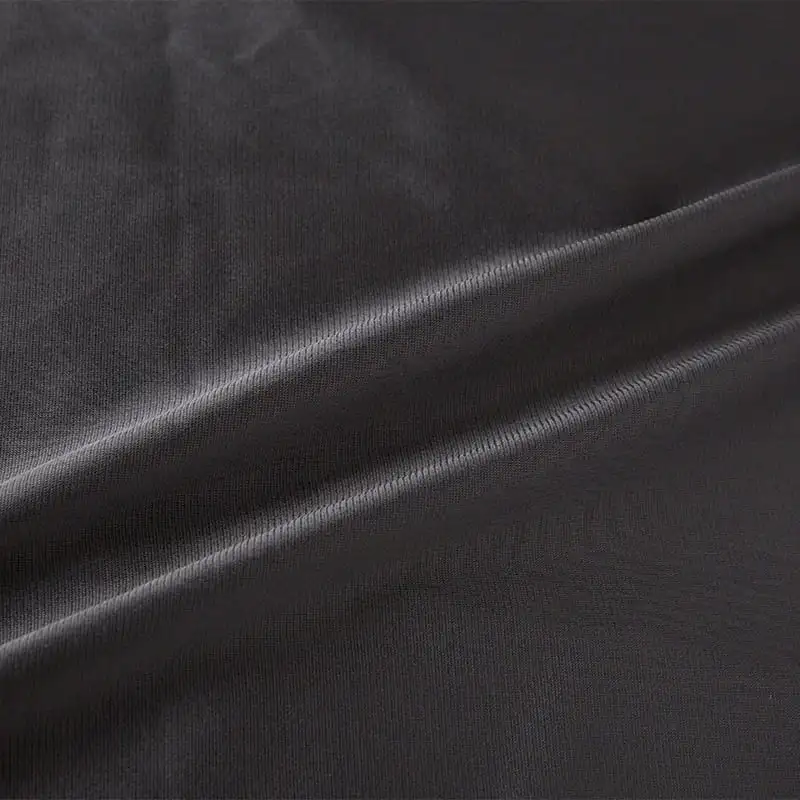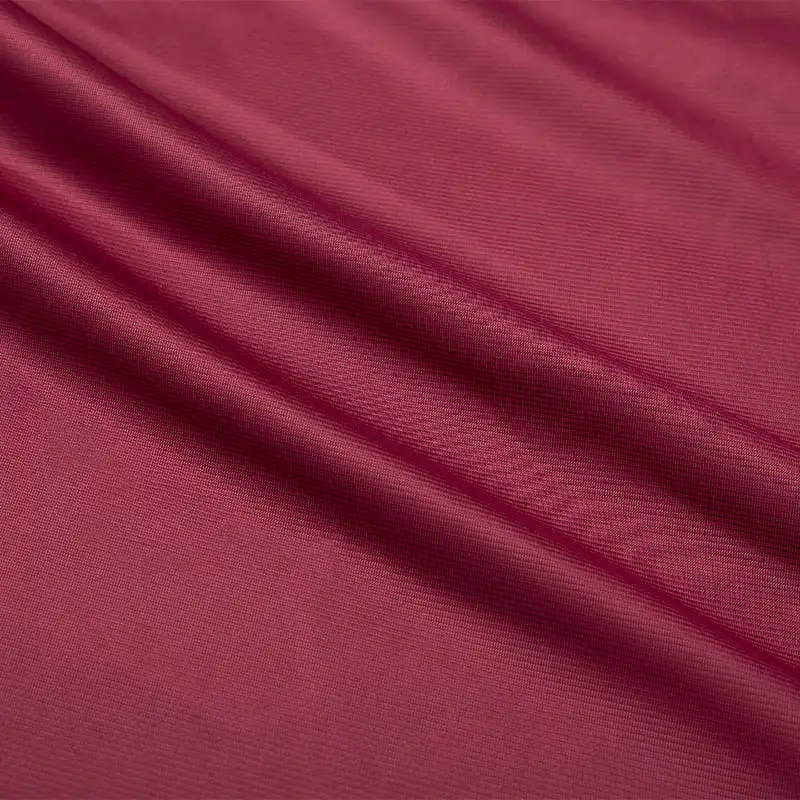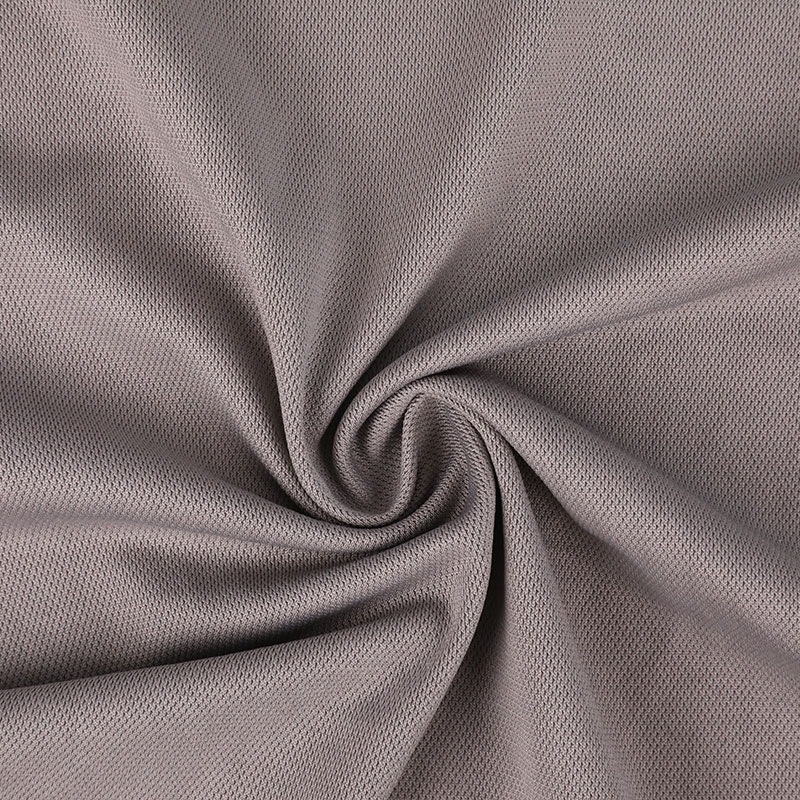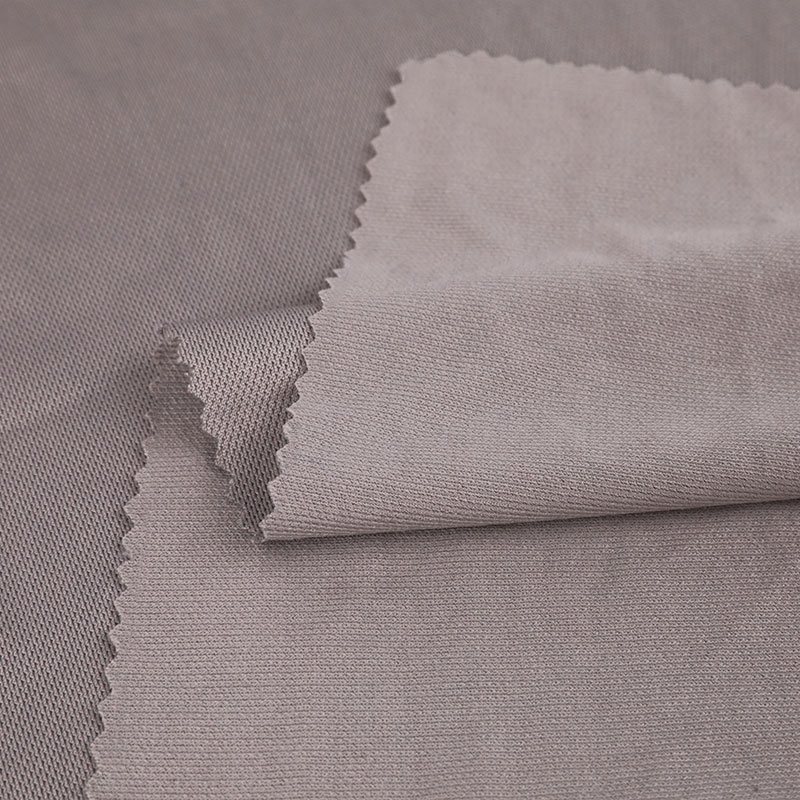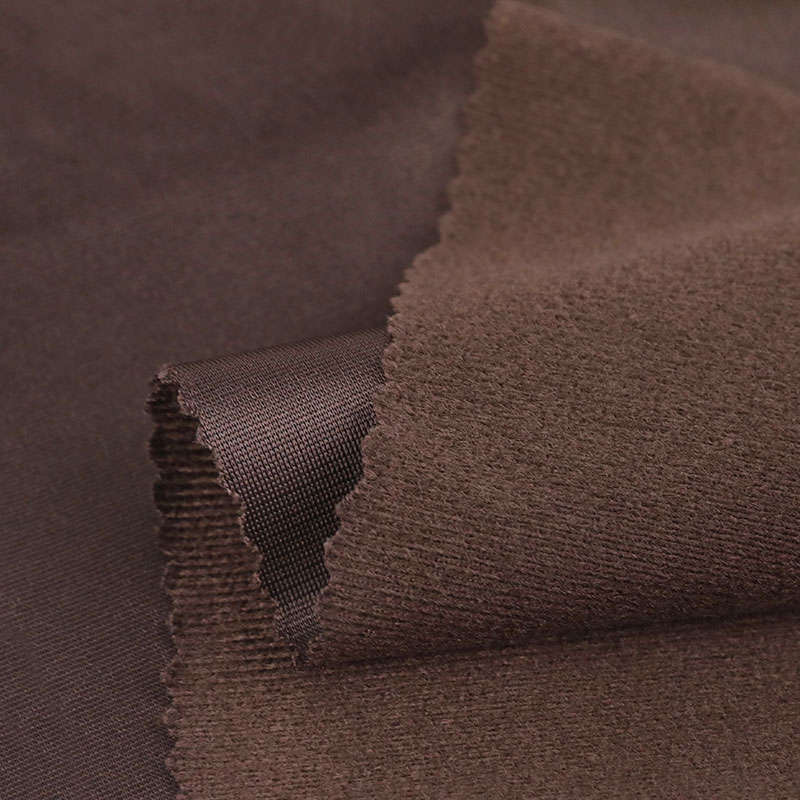Introduction: Concept and Importance of Warp Knitting Fabric
Warp Knitting Fabric is a significant type of textile in the industry. Compared to weft-knitted fabrics, it offers **high structural stability, strength, and elasticity**, making it widely applied in apparel, home textiles, industrial materials, and medical textiles. As textile technology advances, Warp Knitting Fabric has increasingly become the preferred choice for high-performance fabrics. The unique structure of Warp Knitting Fabric originates from its production method: **yarns are interlaced along the warp (longitudinal) direction** to form the base structure of the fabric. This allows the fabric to be lightweight and soft while maintaining high durability and stability, suitable for a variety of complex applications.
Properties of Warp Knitting Fabric
Mechanical Properties
The mechanical properties of Warp Knitting Fabric mainly include **strength, elasticity, and abrasion resistance**. Due to the continuous arrangement of warp yarns, it has **higher tear and tensile strength** than weft-knitted fabrics. Proper warp knitting structures also provide excellent elasticity, allowing the fabric to recover quickly after stretching, making it suitable for sportswear and functional textiles. Abrasion resistance is another important characteristic. High-strength yarns and tight knit structures prevent pilling and wear, which is critical for frequently used apparel, home textiles, and industrial materials.

Physical Properties
In terms of physical properties, Warp Knitting Fabric demonstrates good **breathability and softness**. Breathability depends on the fabric's porosity, and adjusting warp density and knitting patterns can meet various ventilation requirements. Softness comes from yarn arrangement and stitch spacing, making the fabric comfortable for apparel and high-end home textiles. The fabric also shows excellent **water resistance and moisture management**. Functional finishes can provide waterproofing, sweat resistance, and quick-drying effects, making it popular in sportswear, outdoor gear, and medical protective fabrics.
Chemical Properties
The chemical properties include **chemical resistance, UV resistance, and heat resistance**. Industrial and medical applications often expose fabrics to chemicals, disinfectants, and high temperatures. High-performance Warp Knitting Fabric usually uses polyester, nylon, or blended yarns to ensure stability and durability in harsh conditions. Special finishes can also impart **antibacterial, antistatic, and UV-resistant properties**, making the fabric suitable for specific demanding environments.
Types of Warp Knitting Fabric
Tricot Fabrics
Tricot Fabrics are a common type of Warp Knitting Fabric, characterized by a smooth face and visible loop structures on the reverse side. They are soft, elastic, and commonly used in **underwear, swimwear, and sportswear**. Their light, comfortable feel and excellent fit make them a popular choice in the high-end apparel market.
Raschel Fabrics
Raschel Fabrics are known for **complex patterns and varied stitch techniques**, capable of producing lace, mesh, and three-dimensional textures. They are not only decorative but also structurally stable, widely used in **home textiles, curtains, industrial filter fabrics, and automotive interiors**.
Special Types of Warp Knitting Fabric
Besides Tricot and Raschel, special types include **Leno and Spacer fabrics**. Leno structures lock warp yarns to enhance stability and breathability, suitable for **protective nets and filtration materials**. Spacer fabrics use a **double-layer structure** to provide thickness and cushioning, commonly applied in **shoe insoles, seat cushions, and medical support materials**.
Production Process of Warp Knitting Fabric
Warp Preparation
Production begins with **warp yarn preparation**. High-quality yarns are essential for fabric performance. Yarns are evenly aligned under tension, then subjected to warping and creeling to prepare for knitting.
Knitting Techniques
The core equipment is the **warp knitting machine**. Knitting techniques interlace warp yarns to form fabric structures. Needle spacing, density, and stitch patterns determine the fabric's properties. Modern machines support **multi-layer knitting and patterned designs**, enabling high-efficiency production of complex and functional fabrics.
Finishing and Post-Treatment
After knitting, fabrics undergo **dyeing, heat setting, and functional finishing**. These processes enhance aesthetics and hand feel, and can impart **waterproof, wrinkle-resistant, and antistatic properties**, meeting diverse application requirements.
Applications of Warp Knitting Fabric
Apparel Applications
Warp Knitting Fabric is widely used in apparel due to its **elasticity, comfort, and fit**. Sportswear benefits from breathable, quick-drying, and resilient fabrics. Underwear and swimwear use its high elasticity and softness to provide support and comfort while maintaining shape over repeated use and washing.
Home Textiles and Furnishing
In home textiles, Warp Knitting Fabric is applied in **bedding, curtains, cushions, and upholstery**. Raschel techniques and special yarns enable aesthetically pleasing fabrics with **durability, easy care, and wrinkle resistance**, enhancing user experience. Spacer fabrics provide **cushioning and ventilation** for seat pads and children's safety products, meeting functional and comfort demands.
Industrial and Technical Applications
Industrial use of Warp Knitting Fabric focuses on **strength, abrasion resistance, and special functionality**. Applications include **filter fabrics, protective nets, and industrial padding**. In automotive and aerospace sectors, warp-knitted fabrics withstand long-term use and environmental stress, with finishes providing **fire resistance, antistatic, and UV protection**.
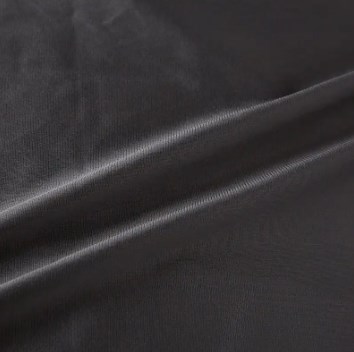
Medical and Healthcare Applications
Medical textiles require **functional and safe fabrics**. Warp Knitting Fabric is used in **surgical gowns, protective clothing, bandages, and support materials**. High-performance fabrics with **antibacterial, waterproof, and antistatic finishes** reduce cross-infection risk. Spacer fabrics in rehabilitation cushions and support devices enhance comfort and durability.
Technological Innovations in Warp Knitting Fabric
Smart Warp Knitting Machines
With Industry 4.0 and smart manufacturing, warp knitting machines are increasingly **automated and intelligent**, controlling yarn tension, multi-layer knitting, and patterning. Data-driven optimization improves production efficiency and fabric consistency, enabling precise manufacturing of functional textiles at scale.
High-Performance Yarns
Fabric performance heavily relies on yarn quality. High-strength **polyester, nylon, carbon fiber composites, and functional polyester yarns** enhance lightweight, strength, abrasion resistance, and functionality. Innovative yarns allow Warp Knitting Fabric to meet diverse requirements in sports, industrial filtration, and medical protection.
Functional Finishing Technologies
Functional finishing such as **waterproofing, stain resistance, antistatic, antibacterial, and UV protection** enhances fabric performance and expands application. Outdoor apparel, industrial protective materials, and medical textiles achieve multiple functionalities, increasing market competitiveness.
Market Prospects of Warp Knitting Fabric
Global Market Trends
With growing demand for **functional, comfortable, and high-performance fabrics**, the Warp Knitting Fabric market is rapidly expanding. Sportswear, home textiles, medical, and industrial sectors offer broad opportunities. High-end functional textiles increasingly adopt warp knitting for its **diverse performance and production flexibility**.
Domestic Market Opportunities
Domestic markets benefit from **textile industry upgrades and higher consumer standards**. Applications are extending to high-end home textiles, functional apparel, and industrial technical textiles. Development of local warp knitting equipment and high-performance yarns supports the industry’s growth and competitiveness.
Future Development Directions
Future trends focus on:
- High-Performance Fabrics: Lighter, stronger, and more durable fabrics for high-end apparel, industrial, and medical uses.
- Smart Production: Intelligent knitting machines and digital manufacturing for efficiency and precision.
- Multi-Functional Fabrics: Integration of waterproof, antibacterial, flame-retardant, and UV-resistant finishes.
- Green and Sustainable Textiles: Eco-friendly yarns and sustainable production practices to meet global demand.
Conclusion
Warp Knitting Fabric plays a critical role in modern textiles, offering **unique structures, excellent performance, and wide applications** across apparel, home textiles, industrial, medical, and technical sectors. Continuous innovation, smart manufacturing, and functional expansion enable warp-knitted fabrics to unlock new market potential. As global demand for **high-performance, functional, and sustainable textiles** grows, Warp Knitting Fabric will continue to lead textile innovation, providing designers, manufacturers, and end-users with the perfect balance of **comfort, functionality, and aesthetics**.

 English
English Español
Español